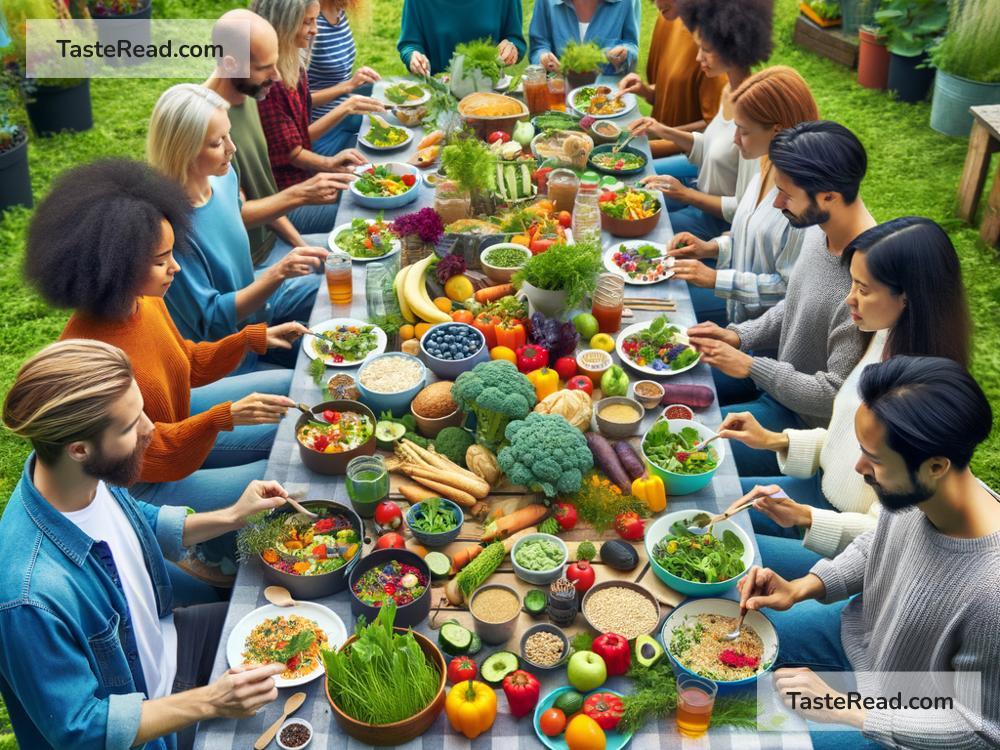The Future of Food Equity: A Step Towards Fairer Food Access
Food is essential for life, yet millions of people around the world still struggle to access nutritious and affordable meals. Many communities face food inequities, meaning that access to healthy food is uneven due to factors like poverty, geography, or social discrimination. As global challenges like climate change, population growth, and economic shifts continue to shape our world, we must ask an important question: What does the future of food equity look like?
In this blog, we’ll explore key trends, innovative ideas, and hopeful solutions that could help create a fairer food system. The goal is simple but vital—making sure everyone has access to safe, nutritious, and affordable food.
What Is Food Equity?
Food equity means that everyone, regardless of their income, location, or background, has fair access to food. It’s not just about having enough food to eat; it’s about having the opportunity to choose healthy, culturally appropriate, and sustainable food options.
For example, some neighborhoods (often called “food deserts”) lack grocery stores or farmers’ markets, making it tough for residents to buy fresh fruits, vegetables, or other essentials. Meanwhile, wealthier areas usually have plenty of food options. Food equity aims to close this gap.
Challenges to Food Equity in the Future
As we look ahead, the world faces several problems that could make food inequities worse if we don’t act. Some of the biggest challenges include:
1. Climate Change
Extreme weather events caused by climate change—like droughts, floods, and heatwaves—are already affecting food production. Farmers in low-income countries, who often rely on small-scale agriculture, are especially vulnerable. These disruptions could drive up food prices, making it harder for poor families to afford staple foods.
2. Population Growth
The global population is expected to reach nearly 10 billion by 2050. Feeding everyone will require smarter ways to distribute food and reduce waste. If food systems don’t keep up, inequalities could grow.
3. Economic Inequality
As the gap between the rich and poor widens, access to nutritious food may become even more unequal. Rising food prices could hit low-income families hardest, forcing them to rely on cheaper, unhealthy options.
4. Urbanization
More people are moving to cities, where access to food can vary greatly depending on the neighborhood. Urban areas often have stark differences between food-rich and food-poor zones.
5. Cultural and Social Barriers
In some regions, discrimination based on race, gender, or class can limit people’s access to resources, including food. Marginalized groups often face the highest rates of food insecurity.
Solutions for a Fairer Food Future
The good news is that many experts, organizations, and communities are working to improve food equity. Here are some promising solutions:
1. Technology and Innovation
Technology has the power to transform food systems. For example, apps and platforms can connect surplus food to people in need, reducing waste. Advanced farming techniques like vertical farming and hydroponics can grow food in urban areas, making fresh produce more accessible in crowded cities.
Artificial intelligence (AI) can also help predict and manage food shortages by analyzing weather patterns and crop growth data. The more efficiently we produce and distribute food, the closer we’ll get to equity.
2. Community-Led Solutions
Communities are at the heart of food equity efforts. Local food programs like community gardens, farmers’ markets, and food cooperatives give people better access to affordable and healthy food. When communities come together to solve food issues, they often create lasting change.
3. Government Policies
Policies play a crucial role in shaping food systems. Governments can invest in rural farming infrastructure, support small farmers, and subsidize healthy foods to make them more affordable. For food equity to succeed, leaders must prioritize laws and programs that reduce hunger and food insecurity.
4. Education
Teaching people about nutrition and sustainable food choices empowers them to make better decisions. Schools and community centers can offer programs that teach kids and adults how to grow, cook, and shop for healthier meals. Education also helps communities understand their rights when it comes to accessing food resources.
5. Reducing Food Waste
Globally, one-third of all food produced is wasted. By reducing waste, we can use existing resources more effectively to feed more people. Innovations like smarter packaging and composting can minimize food loss.
6. Supporting Sustainable Farming
Helping farmers transition to sustainable practices can address climate challenges while improving productivity. Methods like agroecology—farming in harmony with natural ecosystems—could make food production more equitable and environmentally friendly.
A Hopeful Future
Creating food equity won’t happen overnight, but the future is filled with opportunities for progress. By working together—governments, communities, businesses, and individuals—we can ensure that everyone has access to nutritious food. Advances in technology, better policies, and a focus on sustainability all offer hope that food inequities can be reduced.
Importantly, efforts to improve food equity must be tailored to different communities. What works in an urban U.S. neighborhood might not be effective in rural Africa or Southeast Asia. Solutions need to respect both the unique challenges and the cultural values of each region.
What Can You Do?
Even small actions can make a difference. Consider supporting local farmers, donating to food banks, or volunteering with organizations that promote food access. Reducing your own food waste and being mindful of what you purchase are also meaningful steps.
Food equity is about fairness and compassion, ensuring no one goes hungry in a world that can produce enough for all. Together, we can build a future where every meal is a right, not a privilege.


